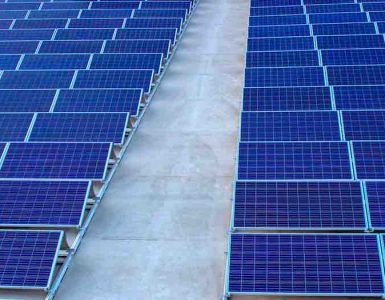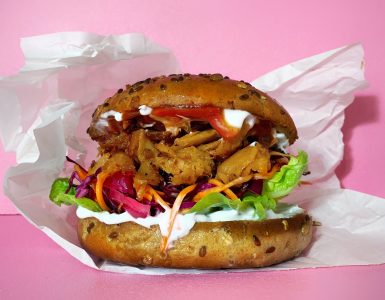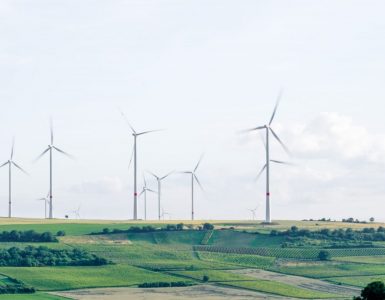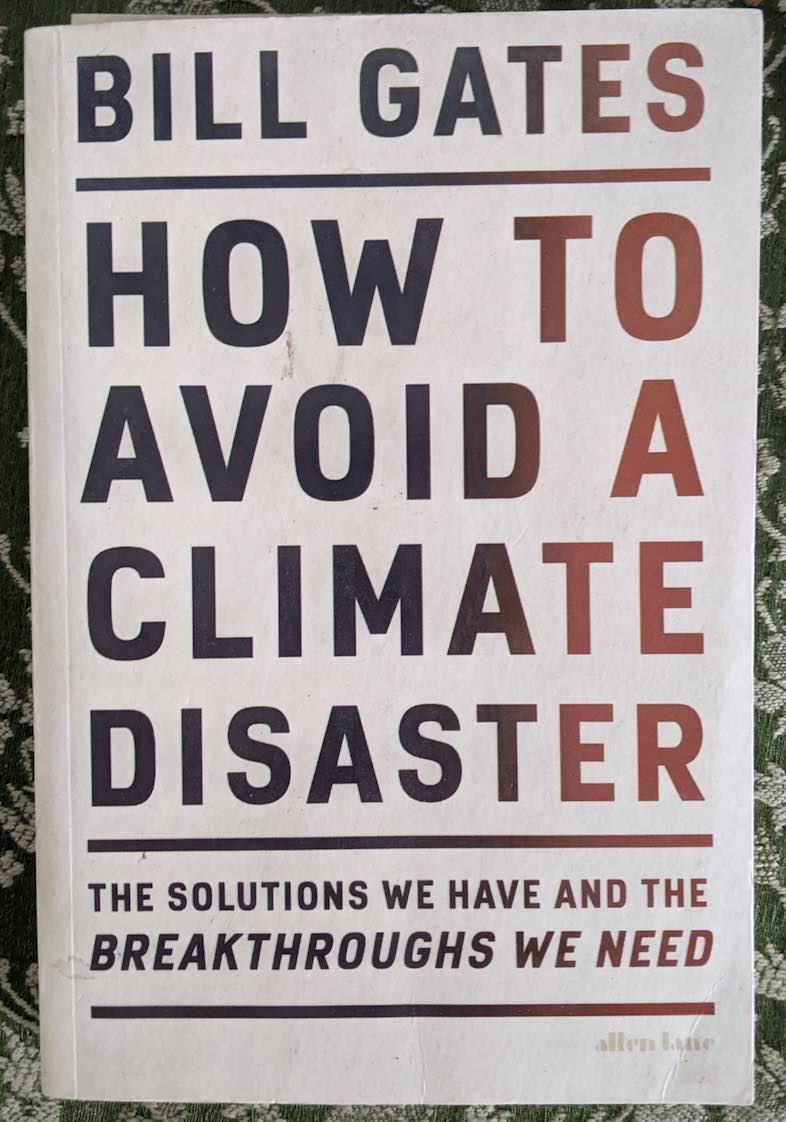Early humans used to live by hunting animals, which meant that they have to move from one place to another to find food for themselves. Once they realized that food can also be grown on land and they don’t have to travel from one place to another, gave birth to Agriculture.
Agriculture over the years was done in harmony with nature, using resources from the environment to grow and cultivate food. Worms and insects feeding on plants and their waste made the soil extremely rich and fertile. Crops became fooder for Animals and Animal waste was used as an Ingredient to provide nutrients to the farming land.
Agriculture meant that people can stay in one place for a considerable period of time, which lead to social communities, permanent homes, and the development of regions and cultures. So in a way, we can say, agriculture was the starting point of modern societies.
However, in the last few decades, the same modern societies have made agriculture dependent on artificial fertilizers, pesticides, and antibiotics. The growing demand to feed a fast-increasing population in the shortest span of time led to industrialization and artificial production.
While modern agriculture had some merits, excessive use of harmful chemicals in food & agriculture has a severe impact on the health of people.
Sustainable agriculture and organic farming show the way to turn things around and give us food that is free from chemicals and pesticides.
But we generally associate organic food that is expensive and available only for the affluent class in a few upmarket retail outlets. Terra Green Organic and Green Station are two company that wants to change that.
As part of our series The Change Trails, we caught up with the co-founder of Terragreens Organic and founder and CEO of Green Station Likitha Bhanu for a quick conversation. Likitha co-founded the company along with her mother, Padmaja Bhanu in 2013. They work with 12,000 farmers across the country to produce and distribute organic products.
Here is an edited version/excerpts of our conversation with Likitha, for the full discussion please watch the video.
Could you elaborate on sustainable food and sustainable agriculture?
Sustainability is a very broad concept. We can define sustainability, as anything which can be preserved for a longer period of time. When we talk about a sustainable lifestyle, we talk about what we consume and do. Like using cycle or walking is also a part of a sustainable lifestyle instead of using fuel or a car.
On the other hand, when we say sustainable agriculture, it means we do agriculture in a way that is not harmful to the environment, or the plant or the product, which is consumed by other people.
We do not use any chemical fertilizers and pesticides because they ruin the quality of the soil and also ruin the quality of the groundwater. Also, they do not give the kind of nutrition that is required in the fruit.
Sustainable agricultural practices are – for the soil, for the plant, and for the consumer. It’s a very holistic thing where it is good for the planet, good for the farmer, and also good for the people who eat the produce.
A sustainable lifestyle is about making the right choices while consuming things. Organic food and organic agriculture are a large part of a sustainable lifestyle.
Organic food is defined as growing food without using any chemical pesticides or fertilizers in the process. We also do not meddle with the traditional way of growing foods. Organic agriculture is defined as agricultural practices where you use traditional knowledge coupled with modern techniques and technology. We use technology in a way that does not harm the environment.
What are the examples of the techniques used in sustainable agriculture?
We use our knowledge of how pests behave as we put them in pheromone traps. We put in yellow sticky glue bags. We have mulch sheets to control weed instead of using weedicides. We have a technique called bed forming. We sow only on height and not on the ground so that the pests do not attack the plant directly. We use drip irrigation which controls weeds and conserves water.
We use a lot of concoctions, biopesticides, and biofertilizers which use natural extracts especially from neem, cow products, etc. We naturally strengthen the crop but we don’t harm.
What is your journey like?
My mother’s been an organic farmer for about 30 years now. She’s always been passionate about agriculture, and she started farming in our family lands as a hobby. She started off experimenting way back in the early 2000s in a two-acre piece of land, wherein she planted almost about 60 fruit trees and paddy. We had cows and hens just like a small sustainable farm.
Post that she moved to large-scale agriculture – about 40 acres. When I graduated from college and came back, we had a problem at home. We had too many carrots, brinjals, bhindi – too much fresh produce that was coming from the farm. We couldn’t consume all of it. There was a point of time when our friends and family went like, ‘We can’t eat anymore!’
It was then that we decided that we must start selling it. Both of us, my mom and I are entrepreneurs by chance. My mom is definitely more enterprising than me. I was looking to solve a problem because I didn’t want to eat bhindi every day or carrot every day. That was my pain point that I was looking to solve and I caught into it.
Now it’s been about eight and a half years since I’ve been handling Terra Greens and Green Station and I have grown to be extremely passionate about agriculture and food, in general. I really love working with farmers and building the supply chain and the market. It’s been a very fulfilling journey in the last eight years.
And that’s how I got in, I didn’t plan this.
Could you tell us about Terragreens Organic?
Terragreens started in 2013 as a supply chain company and initially tied up with a few farmers. We procured material from them, packed it in our facility, and then we started distributing it.
We started off as a small home delivery service in Hyderabad. We were a little bit ahead of time for home delivery because at that time home delivery wasn’t a thing. The Big Baskets of the world didn’t exist. So, we caught into retail, because it wasn’t really working out for us.
From there, there’s been no looking back because we built Terragreens to be a retail brand. Today, we work with about 12,000 farmers across five states and we source from them, they package at our facility here in Hyderabad, and then we distribute across channels of the trade like modern trade, general trade, traditional trade, and organic trade.
Our major market footholds are Hyderabad, Bangalore, and Chennai. We also work a lot on the backend. We support other larger companies, both in India and abroad, to build their supply chain. We have a B2B wing and we have our own organic thing.
We also do Himalayan Pink Rock Salt in a very big way. We are one of the largest packers of Himalayan pink rock salt in the whole of South India.
How do you go about the logistics and ensure that the processes are followed as needed?
Unlike conventional produce, organic food is highly regulated. Every packet of ours holds the certification logos – they’re certified by India Organic and USDA Organic. What it means is that we have to show traceability. Traceability in the sense that a packet on the shelf needs to translate to a farm somewhere and I need to have the paperwork to prove it.
If I do not have that, then I do not have the right to have the certification. When you are a normal conventional brand, you don’t know where the product is coming from and you do not have any paperwork for that particular product.
The supply chain is built in such a way that – our warehouses, our processing units, our farmers – everybody’s certified. Everybody has gone through an audit. Everybody adheres to certain guidelines. We know where the processing and agriculture are happening and who’s the farmer. If we want to go back and see, we can do it. That’s the line that we need to maintain.
When people ask me – Why is organic expensive – it’s, because there are so many people that are involved in making sure that the entire supply chain is foolproof. At every stage, we need to certify and audit, and that’s where the cost mount. The difference in price at the procurement level will be 15 to 20%, but when we add all this and make sure our product is genuine and truly organic, I cannot sell it at a price that is that low. That’s the reason why we have to constantly educate our customers regarding the costs involved in the supply chain when we do genuinely organic food and sell that.
What are some of the standard practices that go behind the scenes while as a company you would want to ensure the right methods are followed but cannot check how each and every individual is doing?
Considering we are certified, we need to adhere to guidelines. These guidelines tell us that every batch needs to be tested and a test report needs to be put in, along with the documentation. We have yearly audits and need to have a certain number of internal audits. A farm diary is to be maintained at the farm level which is a record of every input and output.
Let’s say, I have one acre of land. And I decide that I want to sow toor dal (lentils) this season. I need to maintain a diary to say that in one acre I am sowing toor dal (lentils). I predict a harvest of one tonne and I have to maintain the receipts for the inputs along with the practices that I will be using. Toor dal is a 60-day crop. For those 60 days, I need to maintain a record.
Against my prediction of one tonne, if I record saying I got two tonnes of dal, the CB is going to ask me how I got two tonnes. When you predict one tonne and get only 500 kgs owing to some unforeseen circumstances like pests, the CB is going to ask about that also because that’s going to be like a record on my sheet. Now, if my farmer has said that I have one tonne with me, I can only procure one tonne. Because there’s a transfer certificate mechanism.
The farmer, let’s say, sells 500 kgs to a person x and 500 kgs to a person y which is me, (s)he can give a transfer certificate of 500 kgs to x and another one of 500 kgs value to me. I can only sell 500 now.
I can now sell 100 kgs to 5 people and they can only sell that 100 kg now. So, the transfer certificate mechanism which we upload, along with trace net, which is governed by the Ministry of Commerce under APEDA, cannot be more than what is actually produced.
When I say “highly regulated”, I mean it is highly regulated. These are the small checks and balances.
Our customers do not know that they must look for logos. Look for words like 100% organic. These words can only be used if you have paperwork.
Otherwise, if you say words like “natural”, “pesticide-free”, “safe produce”, these are unregulated words. Regulated words are “organic”, “100% organic”. The customer also needs to be constantly aware and educated about these things.
We, as an organization, are also responsible. We also need to answer to the authorities so we are not going to mess up. When I am doing everything, I will use regulatory words. But if I’m not doing everything then I’m going to use words that look and sound similar and they’re not going to get me in trouble. We have a lot of brands that are named organic. The name of the brand itself has the word organic in it. But if you see the product line, few products are organic while a few are not. Not all products hold the logos or write “organic”.
If you turn back on any packet and see the ingredients, you will see “organic flat”, “organic something”, and then you will have spices – turmeric, chili that means those are not organic. The customer needs to know what they buy.
How do you select the farmers?
We do work with a lot of NGOs, the government, and the Department of Agriculture. We work with farmer cooperatives and with people who work under the National Organic Mission. Also, there are a lot of bodies that are working for this cause. We collaborate and work in identifying farmers who are willing to turn organic.
We cannot function alone, so we collaborate. We have MOUs; there are many large farmers who take it up as a cause in their villages and they convince other farmers to come together as a group. Then they engage with the big farmers who have an influence over this community. There are many ways through which we engage with the farmer community.
Do you help the farmers in enabling and providing tools and resources or training to better the producer become more organic esp from getting the certification perspective?
We help them with the certification. We also financially support them because certification is costly and we take the cost of certification for them. We maintain paperwork for them. In the beginning, when the knowledge and awareness were low, we had to do a lot more for the farmers. Now that the awareness is on the rise, the Department of Agriculture really supports the farmers in these aspects. They want to concentrate more on developing the market.
For a farmer, the biggest problem with organic food is they grow with all the hard work and get less produce because organic it takes time and gives you a lesser yield than conventional. After all the efforts, they send it out to the mandi and that pinches them. What we do is give them the market. It is like – you grow, I will sell.
We ensure that the farmer understands that there is a connection to the market. We want to function on the front end so that we can support our producers. We don’t want to get into production. It’s a collaborative effort and it’s called a supply chain for a reason – the producer needs to do what they do best and I need to do what I do best.
What is the consumer reaction like and how has the growth been so far with your brand?
The consumers from 2013 to now have evolved immensely. The needs of the consumers have evolved and so have their questions. The kind of consumers that we deal with before to what we deal with now has changed drastically. Awareness is on the high and especially in the last three months, humanity got a reality check. We all were forced to take a step back and reflect on what’s really important, and health became the center point.
For almost the last 10-15 years, wealth or fame was the center point. We were all running so much, and I think the last three months have been very transformational for many. Health took precedence, the family took precedence. Self-love and self-care took precedence, and we finally took a step back to slow down and prioritize what’s really important which is what we’ve been trying to say for the last eight years.
It is wonderful that finally, people are in the mindset to listen. At least ask questions. I always tell my customers to ask as many questions as they want and I will answer every question. Because when you ask questions we know that you’re interested at least. We realize that we don’t have that much time or resources, and being sustainable and making the right choices is so important. Every choice has a consequence, and we’ve been forced to re-evaluate and reassess our consequences. That’s a good thing that has happened, and the consumer’s mindset has changed because of that.
How has the growth been?
In the last 3-4 months, we are seeing quite a bit of growth. We have different problems because we weren’t prepared for them. But I shouldn’t be complaining, from a business point of view, and the consumer point of view. We are trying our best to step up to the opportunity and make the most of it.
We entered this business to provide good food to people. That’s what helps us sleep at night and that’s what gives us the maximum amount of satisfaction. Our business actually creates an impact – the people who work with us, the producers or the consumers, and the planet in total. When you have an opportunity to create more impact, it always is very exciting for us.
Are you looking for funding or is it completely bootstrapped?
We are debt-funded.
I would like to speak about the Green Station. It is a retail startup that was started in 2019. For Green Station, this year has been transformational because we’re in the essential retail space. We always conceptualized Green Station as a multi-brand omnichannel retail store where people come to make better choices. We wanted to be an alternative supermarket. Whatever you get in a conventional supermarket we wanted a sustainable version to be available. If you get detergent in a supermarket, you will get a soap nut-based detergent in Green Station. We wanted to develop the brand as a supermarket chain.
We did not expect or anticipate COVID like everybody, but it has been great because we came on to the forefront because the customer wants what we are selling right now. For Green Station, we are looking to raise an equity round. We want to scale quickly and we are positioned for scale because we have our online website done, we have our store model done. Last year we have worked for it, and the opportunity has presented itself now.
Yes, we are looking to raise funds for Green Station and for Terragreens also we’re looking to raise funds. Terragreens is more of a traditional business and we are looking to raise a combination of debt and equity but for Green Station, we are looking for equity.
What is the future plan and vision for both Terragreens and Green Station; how do you want to see it evolve?
With Terragreens, I think we always want to make the supply chain to be really strong, so we have goals on every level. We want to have around 25,000 farmers under our wing – that is our immediate goal. We want to create a farmer network so that we get access to genuine, good-quality products, along with supporting the farmers.
The second goal is to have the manufacturing capacity. We just opened a new unit that we would like to automate and become much stronger on that front. When it comes to the market, we want to be in more than a thousand stores. We want to strengthen our distribution in India, and also want to explore export opportunities with Terragreens.
For Green Station, right now we’re so tiny. We just finished the first year. We have two more stores in the pipeline in the next month. And we plan to open around 10 stores in Hyderabad and move to Bangalore and Chennai within the next financial year.
Our plan with Green Station is to move quickly and also to the franchise. We have one franchisee already on board. We want to help people set up their own businesses. We’re a multi-brand retail platform, not a Terragreens store. We support other small businesses in the sustainability space. I’m very proud to say that we have products which are made by home business owners. We have products wherein their first retail presence was through Green Station. There are people who filled their first vendor registration form with Green Station. We want to create a platform where they can put their products to shine. We have a mandate to work with small and small and medium businesses making products in the sustainability space. We also want to create conversation in the community around sustainability and making choices that are better for the environment and for ourselves. That is the core of Green Station. We want to build it in a very strong and solid way so that our customers. When they leave our store after shopping in Green Station, they should feel good about themselves. That is our only mission because we want them to make choices that make them feel immensely good about themselves. They made a better choice for that day.
How do you ensure that plastic is avoided since you are a sustainable brand? And as a consumer what should we do from the outside?
I get this question a lot of times. We need to work with what we have. Technology has not caught up yet to create sustainable packaging. Yes, there’s paper packaging and packaging made out of corn which looks like plastic.
I really liked ID, one brand that I really look up to; they put it up on their packaging. They said we would love to use sustainable packaging but technology does not provide us at the scale that we do. If you have an idea, please write to us. I’ve been trying so hard, but the corn packaging that we have does not have enough shelf life. And it reacts with the product inside while plastic is non-reactive. And then it’s expensive. I have to transfer the cost to the consumer, and the consumer is not willing to pay. And these are a lot of problems that we have when we introduce things like this.
But as a business, we are always on the lookout. In my stores, we plan to introduce recycling bins. If you do come back with the packets then we give you a certain discount. We want to introduce stuff like that so that we made the consumer also aware. We don’t use any plastic bags in our stores, we only use paper bags. We encourage people to carry their own bags and we have our own cotton bags that people can buy. We don’t use plastic packaging for fresh produce.
But at the end of the day, I think it’s an evolution. Between 2013 to 2020, our customer has changed so much and our market dynamics have changed so much. So has technology. We can only hope for the better and I know there are so many good souls out there who are working on this cause. More responsible people there will make the difference.
What is your personal connection with nature and the environment?
I grew up around having a kitchen garden and sustainability. I grew up in Assam, which is a more rural setup than a normal urban area. My weekends were like going fishing or tree climbing. I absolutely felt so connected to nature. Elephant back rides were a normal thing for us.
I think that affects how I perceive my personality today because when I see what I’ve built, my satisfaction comes from the point that we provide good food to people. I can extend what we experienced as a family, thanks to my mother’s passion for this, to a lot more people. I think this is the way forward. If we don’t reflect on what our choices mean not only to us but for the environment and other people, then humanity needs to rethink those lines. I was never a food person; I was just a normal teenager. I started my business when I was 22. I was fairly young and naive. As I grew up, I worked with so many amazing people around, so many passionate people like the people who work with us, which has given me so much more perspective. I think I’m a better person today and I make better choices today than I did when I was younger.
Here is the complete video of the conversation.







Add comment